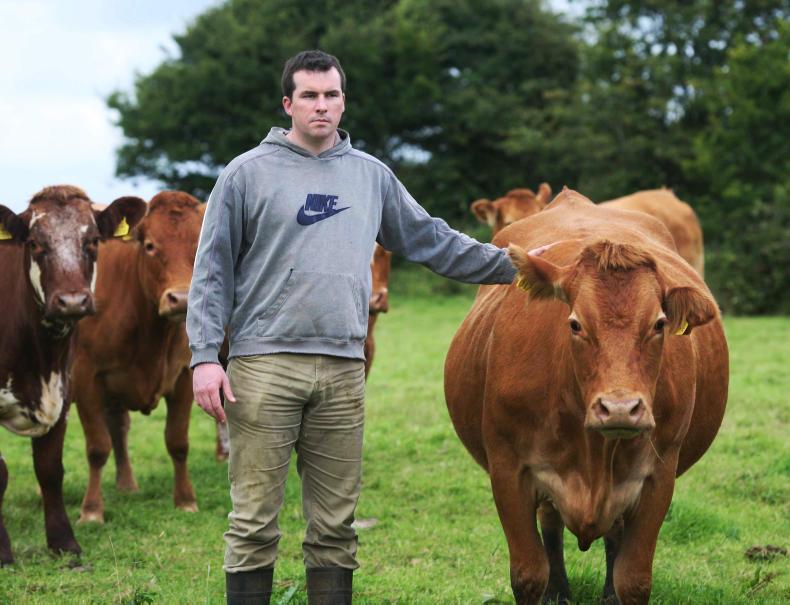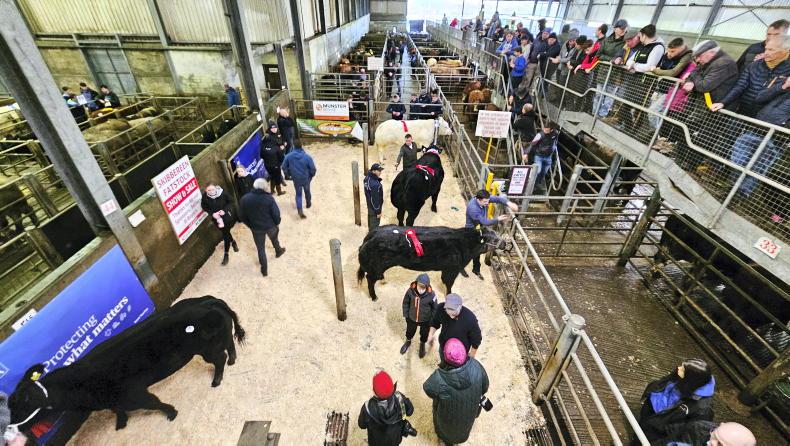The target date to start calving on the farm was the 1 August, however some heifers in-calf to Angus bulls had a shorter gestation period, so the first calves arrived in the last week of July.
Calving has slowed down in the last few weeks, with almost 90% of the herd now calved. No stock bull was used, so all calves are by AI bulls. A mix of Angus, Limousin, Salers and Charolais sires were used on the herd this year.
Cows are calved outdoors, which means no change in diet for the cow and a healthier environment for the calf to be born in. Calves are registered online using a herd management app and are tagged and measured on the day of birth. It is vital that cows do not lose too much condition before being served again, so plenty of grass is needed at this time of year.
The plan is the same for this year, all AI and a similar mix of bulls will be used. Calving ease, milk and a higher carcase weight figure are the traits I will be looking for when choosing bulls for the cows.
Suckler cows with calves at foot can eat a serious amount of grass and go through a paddock very quickly. The cows will receive a mineral boluses pre-breeding and calves must be dehorned, dosed to prevent coccidiosis and vaccinated against pneumonia.
Housing
While my grass wedge is showing a large surplus of grass on the farm and growth remaining strong, I know from experience that this grass can quickly disappear, particularly with wet weather. Housing of cattle is about seven weeks away and management of grass in front of stock will remain very important from now on.
On top of this, there is a surplus of cattle on the farm due to the current beef protests, meaning this surplus could disappear very quickly.
Reports to-date indicate that the mart trade is holding up well for lighter bull weanlings, but I expect there to be issues for the heavier bull unless beef finishers can start moving cattle and some cash is put back into the system.
Many farms are currently running short on funds without an outlet to market their stock and will be reluctant to restock in the current climate. Department of Agriculture payments will soon start to flow, which will help, but they are not a long-term answer.
BEAM
I have applied to join the BEAM scheme, however I am disappointed that there is no exemption for lowly stocked farms or young, newly trained farmers currently trying to expand their business. Perhaps this can be reviewed once the final application numbers are in.
In the meantime, now that the beef talks have concluded, it is vital that the Irish beef industry gets moving again. An increased quality assurance bonus and a review of markets and transparency in the sector must be seen as progress.
Read more
Farmer Writes: paying farmers to reduce numbers is short-sighted
Farmer Writes: triple threat facing beef farmers
The target date to start calving on the farm was the 1 August, however some heifers in-calf to Angus bulls had a shorter gestation period, so the first calves arrived in the last week of July.
Calving has slowed down in the last few weeks, with almost 90% of the herd now calved. No stock bull was used, so all calves are by AI bulls. A mix of Angus, Limousin, Salers and Charolais sires were used on the herd this year.
Cows are calved outdoors, which means no change in diet for the cow and a healthier environment for the calf to be born in. Calves are registered online using a herd management app and are tagged and measured on the day of birth. It is vital that cows do not lose too much condition before being served again, so plenty of grass is needed at this time of year.
The plan is the same for this year, all AI and a similar mix of bulls will be used. Calving ease, milk and a higher carcase weight figure are the traits I will be looking for when choosing bulls for the cows.
Suckler cows with calves at foot can eat a serious amount of grass and go through a paddock very quickly. The cows will receive a mineral boluses pre-breeding and calves must be dehorned, dosed to prevent coccidiosis and vaccinated against pneumonia.
Housing
While my grass wedge is showing a large surplus of grass on the farm and growth remaining strong, I know from experience that this grass can quickly disappear, particularly with wet weather. Housing of cattle is about seven weeks away and management of grass in front of stock will remain very important from now on.
On top of this, there is a surplus of cattle on the farm due to the current beef protests, meaning this surplus could disappear very quickly.
Reports to-date indicate that the mart trade is holding up well for lighter bull weanlings, but I expect there to be issues for the heavier bull unless beef finishers can start moving cattle and some cash is put back into the system.
Many farms are currently running short on funds without an outlet to market their stock and will be reluctant to restock in the current climate. Department of Agriculture payments will soon start to flow, which will help, but they are not a long-term answer.
BEAM
I have applied to join the BEAM scheme, however I am disappointed that there is no exemption for lowly stocked farms or young, newly trained farmers currently trying to expand their business. Perhaps this can be reviewed once the final application numbers are in.
In the meantime, now that the beef talks have concluded, it is vital that the Irish beef industry gets moving again. An increased quality assurance bonus and a review of markets and transparency in the sector must be seen as progress.
Read more
Farmer Writes: paying farmers to reduce numbers is short-sighted
Farmer Writes: triple threat facing beef farmers













SHARING OPTIONS